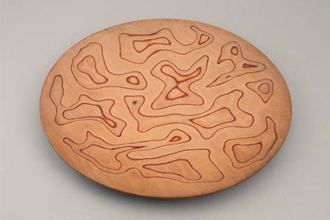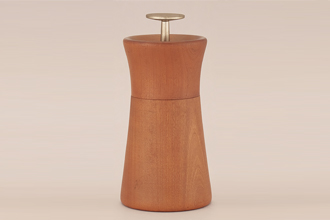Transmitting Art and Craft - Japanese Industrial Design Originating in Tohoku|Exhibition Guide

The Meiji government proactively implemented policies for encouragement of a new industry and export promotion as part of its mission of building a modern state. Participation in world expositions (expos) and organization of national industrial exhibitions were driving forces for these policies.
It was at the World Exposition 1873 Vienna, that Japan formally participated in an expo for the first time. The craft products exhibited there astonished the visitors. The metalwork and lacquer work products, as well as enamel and ivory sculpture works became very popular among them, which drastically boosted the export of Japanese craft products. The Meiji government also aggressively organized national industrial exhibitions in order to promote national industries and encourage their production activities. Additionally, many craft products were exhibited there.
Thus, craft products served as a pillar of the Japanese industry during the Meiji era.
The National Research Institute of Industrial Arts Attached to the Ministry of Industry and Commerce was established in Sendai City, Miyagi Prefecture, in 1928. The institute aimed to modernize arts and crafts, promote industrialization and develop the craft industry in the Tohoku region. The institute developed its global activities from the initial stage by inviting Bruno Julius Florian TAUT, world-famous architect, and Charlotte PERRIAND, a design partner of Le Corbusier, an architect, as instructors. It produced so many designers such as KENMOCHI Isamu and TOYOGUCHI Katsuhei as an organization leading in the arts and crafts, and design fields. Looking far back at the activities of the institute, we can regard it as one of the origins of Japanese industrial design.
The Tohoku History Museum organized an exhibition workshop titled “Traditional Handicraft Living Today” under the theme “revaluating the activities of the National Research Institute of Industrial Arts from today’s perspective.” This was an attempt to recognize the traditional craftsmanship and handicraft existing today through prototypes of the institute. At the workshop with 30 participants of high school students interested in design, college/university students learning design or interested in the history of the institute’s activities, and craft artists, they made contemporary works based on old prototypes while looking back at the institute’s activities through the discussion. Here, what could be created by interpreting the institute’s prototypes differently, from a contemporary viewpoint, is introduced based on the experience of the workshop’s participants.
Craftwork as an industry can be tracked through museum and university collections. The National Museum of Ethnology collected production tools related to metalwork in Kyoto and dubbed them the “Sono Collection” in 2016. In addition to the production tools, production processes were also video recorded. Kanazawa College of Art has a collection dubbed “Comparison of 100 Craftsmen in Heisei” consisting of the processes, techniques, and product samples of craft products throughout Japan, as well as their tools and materials. The housing and exhibition activities that allow the students to view the materials at any time are unique to the College as an educational institute in art, craft, and design.
Here, the significance of museums’ inheritance of craft materials is shown through initiatives by the National Museum of Ethnology and Kanazawa College of Art.
In 1969, the birth of “Industrial Products Research Institute” resulting from the reorganization of national institutes resulted in the elimination of national institutes titled “Industrial Art.” However, the activities of the National Research Institute of Industrial Arts for about 40 years significantly impacted the Japanese craft and design worlds. The craft products that the institute targeted were not works of art for appreciation but craft products whose functionality would be evaluated by using them. Craft products are produced to “enrich our daily lives” and “make users happy” by respecting traditional techniques and introducing new technologies for users. Handicraft is the process of inheriting the manufacturing styles and techniques from ancestors. The process may be called KOGEI, whose ultimate goal is to develop arts and crafts, as well as industrial arts.
Here, the possibilities of arts and crafts, industrial arts, and KOGEI in the future are highlighted.

|

|





